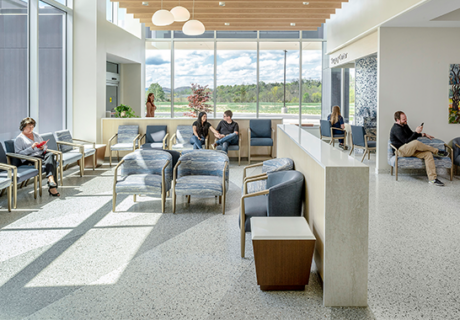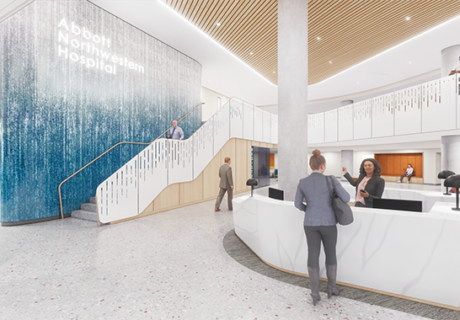Greater Baltimore Medical Center Family Care Associates Renovation [Baltimore]
Project category: Remodel/renovation
Chief administrators: John B. Chessare, MD, CEO, GBMC; Bennett Beres, COO, GBMA
Firm: CR Goodman Associates, www.crgoodmanassociates.com
Design team: Charles R. Goodman, AIA, EDAC, architect; Robyn I. Dubick, CID, IIDA, LEED AP ID+C, EDAC, interior designer (CR Goodman Associates); Leach Wallace Associates (MEP engineer)
Photography: Stephanie D. Norberg
Total building area (sq. ft.): 6,100
Construction cost/sq. ft.: Not available
Total construction cost (excluding land): Not available
Completed: October 2014
CR Goodman Associates worked closely with Greater Baltimore Medical Center (GBMC) to design a state-of-the-art family care suite.
Acknowledging that changes in healthcare are causing a shift toward outpatient care, and with the Patient-Centered Medical Home model taking hold, GBMC wanted its new family care suite to be a model of excellence for its ambulatory practices. Before putting pen to paper, an integrative team comprised of key personnel from GBMC and representatives from CR Goodman Associates and the Virginia Mason Institute participated in a week-long Lean workshop where the current state of the Family Care Associates (FCA) practice was evaluated and the ideal state for the practice was envisioned.
With goals to maximize staff efficiency and minimize patient wait time, the design incorporates separation of flow between on-stage and off-stage areas. Upon arrival, patients are escorted to same-handed wellness rooms and checked in. Patients and doctors enter on opposite sides of the rooms, and the entire appointment, from check-in to check-out, is completed in-room. Standardized supplies are stocked off-stage to avoid interruption and eliminate downtime of rooms. The design eliminates individual physician offices and instead offers two physician/staff huddle spaces for private discussions while off-stage workstations facilitate communication amongst the care team throughout the day. Since the care team no longer works in silos, the physicians are able to efficiently communicate decisions in real time and patient wait time is reduced.
The resulting workflow is more efficient, reducing the overall length of each patient’s visit without reducing time spent with their physician. As a result, the practice has seen an increase in HCAHPS scores and overall patient satisfaction. This design model has been replicated within other areas of the Greater Baltimore Medical Associates organization due to its overwhelming success in this project.




